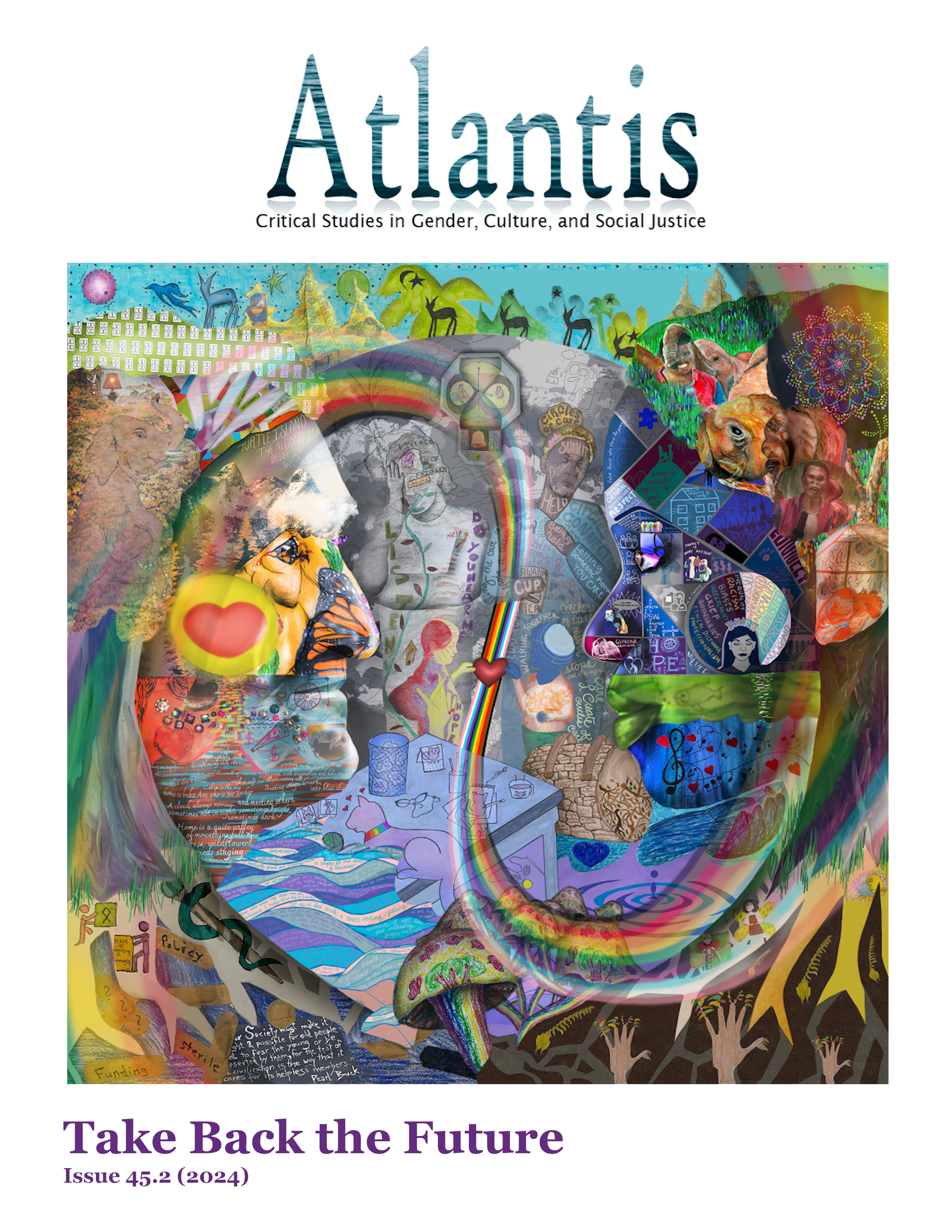The Bar Butch in the Attic
Lesbian Hauntings in Jane Rule’s “In the Attic of the House”
Keywords:
Canadian literature, Gothic, hauntology, Jane Rule, lesbian bar, lesbian-feminism, lesbian studiesAbstract
In an analysis of Jane Rule’s “In the Attic of the House” from her 1981 anthology Outlander, this article examines how Rule uses both the figure of the lesbian and the figure of the ghost to demonstrate the complex, temporal relationship between two lesbian generations in Canada in the late 1970s and the early 1980s. Rule’s “In the Attic of the House” follows an older butch lesbian, Alice, as she is haunted by both the unseen apparition of her dead, once closeted, femme lover and by the presence of younger lesbian feminists in the main floor of the house who begin to consume and rewrite Alice’s queer past. In analyzing three types of social hauntings within this short story, this article draws on both Avery Gordon’s theories of hauntology and Heather Love’s queer theory of “feeling backwards” to imagine how lesbian-feminists in 1970s-80s Canada conducted a “backward” haunting of femme-butch lesbian elders, hailing from the culture of the lesbian working-class bar. By drawing parallels between Rule’s short fiction and the real, historical events of lesbian communities in Canada, this article seeks to recenter the erasures (i.e., the ghostings) and the (in)visbilities of lesbian existence and embodiment in Canada. This paper ultimately analyzes how Rule as author calls upon her readers to consider and contemplate the historical tensions and intimacies between butch-femme elders of lesbian bar culture and the emerging lesbian-feminist collectives in the early 1980s.
References
Ahmed, Sara. 2017. Living a Feminist Life. Durham: Duke University Press. doi:10.1215/9780822373377.
Castle, Terry. 1993. The Apparitional Lesbian: Female Homosexuality and Modern Culture. New York: Columbia University Press.
Duder, Cameron. 2010. Awfully Devoted Women: Lesbian Lives in Canada, 1900-65. Vancouver: UBC Press.
Faderman, Lillian. 1994. Chloe Plus Olivia: An Anthology of Lesbian Literature from the Seventeenth Century to the Present. New York: Penguin Books.
_____. 1991. Odd Girls and Twilight Lovers: A History of Lesbian Life in Twentieth-Century America. New York: Columbia University Press.
Gordon, Avery F. 2008. Ghostly Matters: Haunting and the Sociological Imagination. Minneapolis: University of Minnesota Press.
Halberstam, Jack. 1998. Female Masculinity: 20th Anniversary. Durham: Duke University Press.
_____. 2018. Trans*: A Quick and Quirky Account of Gender Variability. Berkeley: University of California Press.
Hersford, Victoria. 2005. “Feminism and its Ghosts: The Spectre of the Feminist-as-Lesbian.” Feminist Theory 6(3):227-250. doi: 10.1177/146470010507361.
Kennedy, Elizabeth Lapovsky and Madeline D. Davis. 1994. Boots of Leather, Slippers of Gold: The History of a Lesbian Community. New York: Penguin Books.
Love, Heather. 2007. Feeling Backward: Loss and the Politics of Queer History. Cambridge, Mass.: Harvard University Press.
Ross, Becki L. 1995. The House that Jill Built: A Lesbian Nation in Formation. Toronto: University of Toronto Press.
Rule, Jane. 1981. “In the Attic of the House.” Outlander: Short Stories and Essays. Tallahassee: Naiad Press.
Downloads
Published
Issue
Section
License
Copyright (c) 2024 Emma Wood

This work is licensed under a Creative Commons Attribution 4.0 International License.
Authors who publish with this journal agree to the following terms:
1. Authors retain copyright and grant the journal right of first publication, with the work simultaneously licensed under a Creative Commons Attribution 4.0 International License that allows others to share the work with an acknowledgement of the work's authorship and initial publication in this journal.
2. Authors are aware that articles published in Atlantis are indexed and made available through various scholarly and professional search tools, including but not limited to Erudit.
3. Authors are able to enter into separate, additional contractual arrangements for the non-exclusive distribution of the journal's published version of the work (e.g., post it to an institutional repository or publish it in a book), with an acknowledgement of its initial publication in this journal.
4. Authors are permitted and encouraged to preprint their work, that is, post their work online (e.g., in institutional repositories or on their website) prior to and during the submission process. This can lead to productive exchanges, as well as earlier and greater citation of published work. Read more on preprints here.







